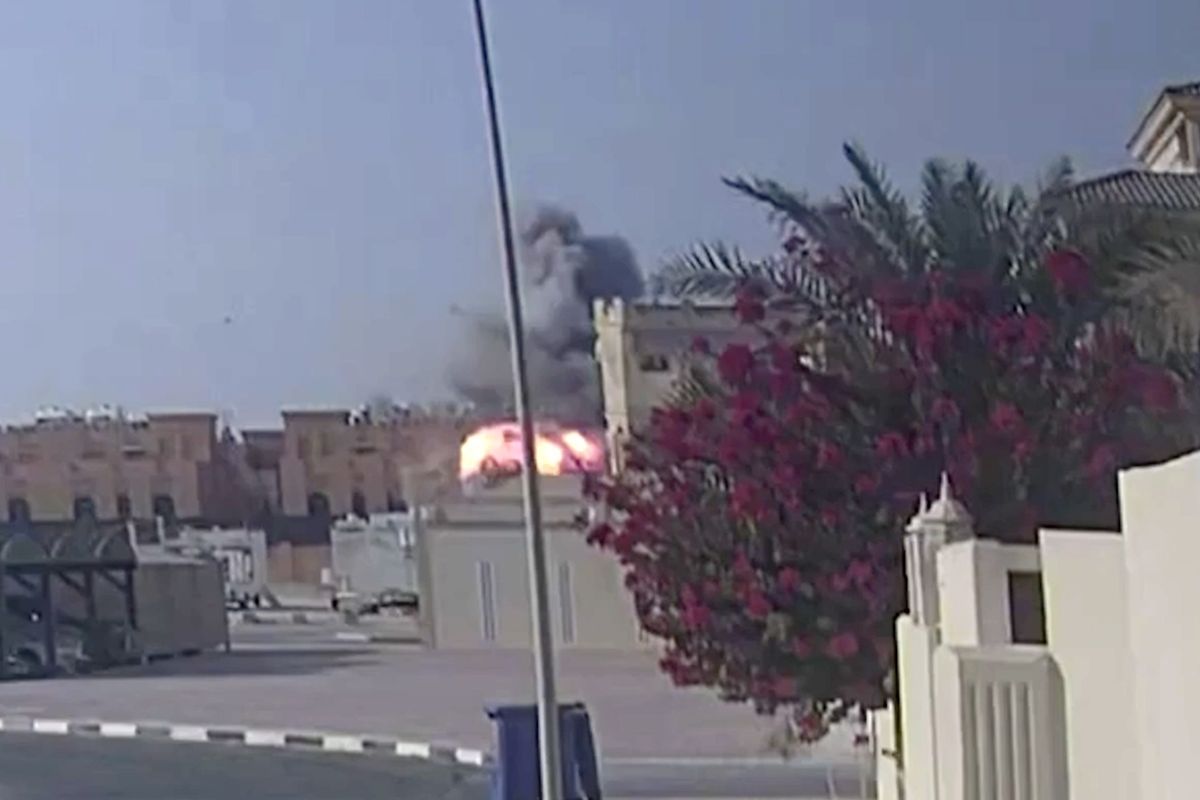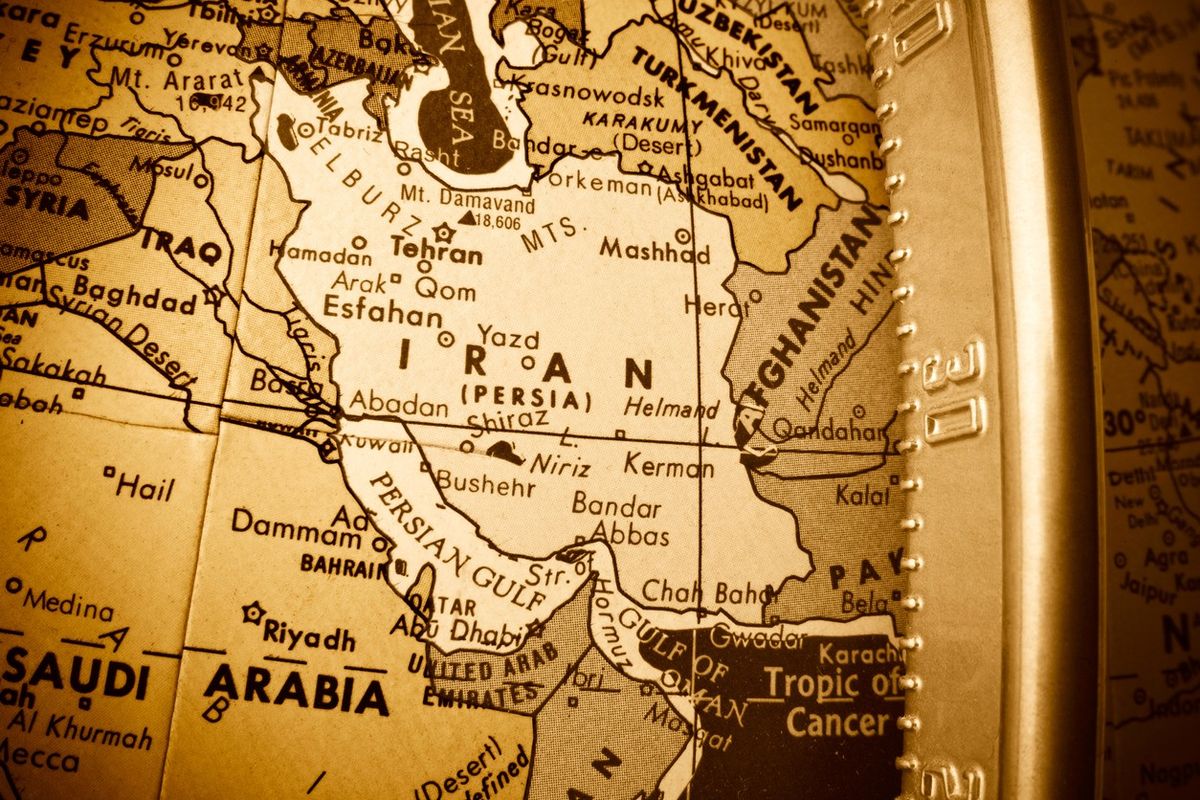In an important display of unity, the two distinct Palestinian governments, the Palestinian Authority, which controls the West Bank, and Hamas, which oversees the Gaza Strip, agreed on October 12 to a number of important principles including the formation of a unity government. Although previous attempts at negotiations between the two Palestinian governments fell through, this time around, conditions were ripe for the two sides to come together. However, the recent agreement’s impact on the prospects for Palestinian statehood appear minimal as the two sides still have many obstacles to overcome. The Cipher Brief’s Bennett Seftel sat down with Aaron David Miller, a former advisor to both Republican and Democratic secretaries of state on Arab-Israeli negotiations, to discuss what to expect from the recent deal and how much of an impact it will have on the Palestinian political establishment moving forward.
The Cipher Brief: What were the parameters of the agreement signed last week between the Palestinian Authority (PA) and Hamas?
Aaron David Miller: On Oct. 12, the Fatah-led Palestinian Authority (PA) and Hamas reached an agreement brokered by Egypt that PA President Mahmoud Abbas hailed as a “final agreement to end disunity.” The accord was anything but.
For reasons related to internal domestic politics, the two sides reached an aspirational accord that might facilitate humanitarian assistance to Gaza, restore limited PA control there, end its isolation through opening up crossing points, and reduce the prospects of an Israeli-Hamas military confrontation. There is great uncertainty with regard to implementation. But the prospects of limited cooperation between Hamas and Fatah is now greater than at any time since Hamas seized control of Gaza in 2007.
But the core issues that separate Hamas and Fatah – a Palestinian national movement that I’ve described as Noah’s ark, where there is two of everything (statelets; security services; visions of where Palestine is and what it is; and views on armed struggle and negotiation) – remain fundamentally unresolved.
This was a shotgun, temporary marriage of convenience driven by the fact that Hamas’ own ineptitude and mismanagement of Gaza had created an economic crisis replete with electricity shortages and blackouts; isolation of the strip; and high unemployment. Combine that with PA President Abbas’ need to demonstrate his own relevance, the popularity of Palestinian unity on the street, and Abbas’ desire to keep his main rival Mohammed Dahlan out of the process, and it’s clear why the so-called unity and reconciliation accord made more progress this time than in previous efforts.
The Egyptians, who brokered this deal, have their own agenda: breaking Hamas’ connection to jihadists in the Sinai Peninsula, undermining the Muslim Brotherhood, reducing smuggling and contraband in and out of Gaza, and undermining the influence of Hamas’ traditional supporters – Iran, Qatar, and Turkey.
The Trump administration has welcomed the accord as an opportunity, in large part because Washington believes it means a restoration of PA control over Gaza. At the same time, the Administration has insisted that Hamas recognize the Quartet conditions – recognition of Israel, abandonment of terror and violence, and acceptance of all previous accords. If in fact real unity were ever to be achieved and a joint PA government formed with Hamas represented politically, the Trump administration might find itself in an awkward positon of having to deal with a national movement in which one part has a foot in violence and terror and the other in politics.
The Israelis have adopted a tough line against Hamas’ participation in any negotiation, but may see advantage to improving conditions in the Gaza strip, which this limited accord may help facilitate. If Israeli Prime Minister Benjamin Netanyahu were looking for an excuse not to participate in any negotiations with Palestinians, the formal presence of Hamas in an Abbas government would certainly give it to him.
TCB: What will happen to Hamas’ fighting force of around 25,000 soldiers known as the Izz al-Din al-Qassam Brigades?
Miller: The Gaza Strip is 363 square kilometers. It’s unclear to me to what degree the PA will actually assume control over the entire Gaza Strip. I very much doubt it. That would mean the PA might threaten Hamas’ business, such as its smuggling, underground tunnels, military capacity, collocating military assets with civilian institutions in preparation for the next confrontation with Israel, as well as the manufacture and import of components for high trajectory weapons.
The 25,000 in Hamas’ Qassam brigades will remain intact and under Hamas control. Hamas will never give up this asset nor surrender Gaza as a base of operations against Israel. Were Hamas to do this, it would abandon the only asset that separates it from the PA and leave itself vulnerable and without leverage in its competition against both Abbas and the Israelis.
How could the agreement impact Hamas relations with Iran and the Muslim Brotherhood?
Miller: Hamas is trying to navigate a fine line to maintain the financial support it needs from the UAE and other Gulf States and also to keep the Egyptians satisfied. At the same time, as this weekend’s Hamas delegation visit to Tehran demonstrates, Hamas is not prepared to become a hostage to the Sunni states.
Hamas also wants to demonstrate that the accord with Abbas has not domesticated its resistance ideology nor forced it to abandon terror and violence against Israel. Walking this line is going to be increasingly difficult. Should Hamas decide to launch attacks against Israel, the entire reconciliation process could come to an end.
TCB: How could this agreement affect the prospects for Palestinian statehood?
Miller: The central issue that no one wants to talk about with respect to obstacles to any meaningful negotiation leading to a two-state solution has been the absence, on the Palestinian side, of a monopoly over the forces of violence within its own society. If there is any attribute to statehood, it’s the capacity of the state to control those forces.
And a divided Palestinian national movement means the absence of one gun, one state, one authority, and one set of negotiating positions. Indeed, there is no way that any meaningful two-state solution can be realized without a unified Palestinian commitment to this position.
It is unclear at this point whether this limited reconciliation agreement will have any impact whatsoever on the prospects of starting, let alone finishing, negotiations between Israel and the Palestinian Authority. At the moment, the so-called peace process isn’t ready for prime time. You have two leaders, Abbas and Netanyahu, who are unable and unwilling to make tough decisions on the six core issues that need to be addressed if a two-state solution were to ever be achieved: borders, security, refugees, Jerusalem, recognition of Israel as the nation state of the Jews, and adjudicating all claims and outstanding issues. Finally, it is not clear whether the Trump administration has the will or skill to play the role of an effective broker should the parties be willing to make these decisions.
It will be fascinating to see if and when the administration rolls out a peace initiative, exactly what it entails. The administration keeps talking about an ultimate deal when one is clearly not achievable now. I met with Jared Kushner several months ago, and I said to him that I wish my father-in-law had as much confidence in me as his father-in-law appears to have in him, because he has given him mission impossible or maybe mission implausible.
It appears that the peace process is going to remain trapped for the foreseeable future between a two-state solution that is too important to abandon on one hand and one that it is too difficult to implement on the other.
TCB: In the past, the PA and Hamas have reached agreements only to see them fall through. Is this agreement a step in the right direction? How likely is this agreement to hold?
Miller: The two sides have laid out a very ambitious timetable with the Palestinian Authority assuming responsibly for Gaza by December, including the deployment of PA security forces at the several crossing points between Gaza, Israel, and Egypt. If Hamas and the PA remain practical and the Egyptians and Israelis committed to seeing a limited implementation succeed, it is very possible that this process could help stabilize and improve conditions in Gaza.
Wildcards include the role of Mahmoud Dahlan, divisions within Hamas over the extent of PA authority in Gaza, and to what degree Hamas is prepared to refrain from attacks on Israel.
Alleviating the suffering of the people of Gaza and reducing the prospects of a military confrontation between Israel and Hamas are very worthwhile goals. But to go beyond this and to believe that this agreement could lead to a meaningful reconciliation that would allow for one gun, one state, and one authority to emerge, strains credulity and the reality of Palestinian politics to the breaking point.











